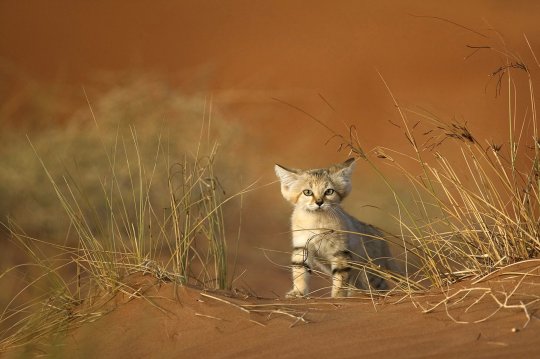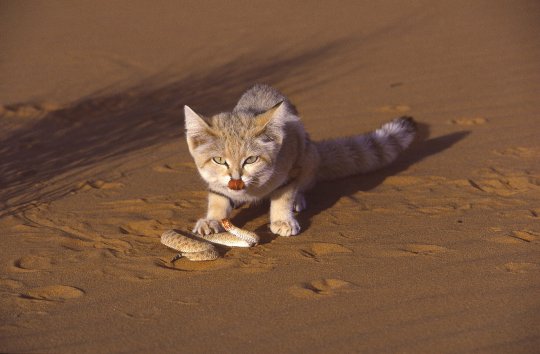#lepus capensis
Explore tagged Tumblr posts
Photo

A cape hare (Lepus capensis) in Kruger National Park, South Africa, Africa
by Bruwer Burger
#cape hare#rabbits and hares#lepus capensis#lepus#leporidae#lagomorpha#mammalia#chordata#wildlife: south africa#wildlife: africa
87 notes
·
View notes
Text


Yellow Baboon & Cape Hare | Sze On, Ng (Aaron)
#hunt#cercopithecidae#leporidae#cercopithecinae#lepus#papio#lepus capensis#papio cynocephalus#cape hare#yellow baboon
2 notes
·
View notes
Text

Lepus capensis. Struik Pocket Guides for South Africa: Mammals. Written by John Skinner. Illustrated by Penny Meakin. 1988.
Internet Archive
221 notes
·
View notes
Text


Cape Hare (lepus capensis)
Source
51 notes
·
View notes
Text
Francisella tularensis PCR detection in Cape hares (Lepus capensis) and wild rabbits (Oryctolagus cuniculus) in Algeria
New Post has been published on https://petn.ws/4hp3
Francisella tularensis PCR detection in Cape hares (Lepus capensis) and wild rabbits (Oryctolagus cuniculus) in Algeria
Tularemia affects animal welfare, human health, and the environment and is thus better approached from a one-health perspective27. Several studies in the Northern hemisphere28, and more recently in Australia15,16, have provided a vital research track in the epidemiology of this disease. In contrast, studies in Africa are too limited and scarce. The aim of this […]
See full article at https://petn.ws/4hp3 #ReptileNews
0 notes
Note
Is there anywhere I can learn about rabbits and ancient Egypt? I love them both as an amazingly adaptive species and just aesthetically but while I know of several species of leporid that live in the area I guess it never occurred to me that ancient Egyptians would have made note of them aside from a food source. But they appear in duatlings and have a hieroglyph? Just, anything you know about rabbits or hares would be amazing!
We don’t know an awful lot about hares in ancient Egypt I’m afraid, apart from that they existed, were often depicted as part of the colour locale in tomb reliefs or as hunting spoils, and were represented as amulets. Unfortunately we don’t know for certain what the symbolic value of any of the hare amulets we have was. The Egyptians may have admired the swiftness of hares, and there certainly were deities (e.g. the goddess Wenet) and duatlings who presented as a hare, but textual evidence about the symbolic background of those is scarce.
Quoting An Ancient Egyptian Bestiary:
The hare's amuletic role is not known for certain. Ancient Greek and Roman authors believed that hares could sleep with their eyes open and reproduce without copulation. If these were also Egyptian beliefs, the hare might have represented extreme vigilance or the primeval deity's self-creating power.
There’s not much more about hares in there, but if you’re also interested in other fauna of ancient Egypt, here’s a link to a PDF of the book in question: https://drive.google.com/file/d/194M0CruGzKXpjzUuRoIQVGSQlJc1U6KE/view?usp=sharing
There’s also a cute little entry by dr. Szpakowska about hare duatlings on the website of the Demonology Project: http://www.demonthings.com/demon-bunnies-ancient-egypt/
In addition I grabbed my copy of The Oxford Encyclopedia of Ancient Egypt for the entry on hares. I hope you don’t mind the somewhat dodgy screenshots: I’ll append a transcription in a reblog later today (baby duty is calling).



#egyptology#ancient egypt#hare#hares#lepus capensis#alt text not yet provided but will be later today#anon asks
61 notes
·
View notes
Photo


Cape hare [Lepus capensis]
3 notes
·
View notes
Text
Wikipedia
"Its way of moving is distinct: with its belly close to the ground, it moves at a fast run punctuated with occasional leaps. :
Hunting and diet
In the Ténéré, a desert region in south central Sahara, sand cats were observed preying foremost on small rodents, and the young of cape hare (Lepus capensis), but also hunting greater hoopoe lark (Alaemon alaudipes), desert monitor (Varanus griseus), sandfish (Scincus scincus) and venomous Cerastes vipers. If they caught more than they could eat, they buried the remains for later consumption.





[x]
92K notes
·
View notes
Text
Top 10 Sandy Facts About The Arabian Desert

The largest and most intriguing desert in Asia is situated on the largest peninsula in the world. It's the type of desert the flashes through your mind when you hear the word, mainly due to the vast body of sand that it features. Let's take a closer look at some of the most interesting facts about the Arabian Desert, one of the most extreme regions on the planet.
1. It covers most of the Arabian Peninsula and 11 countries
The Arabian Desert is one of the largest deserts in the world and is for the most part situated on the Arabian Peninsula. This peninsula in the Middle East is the largest of its kind in the world as it covers an area of 3,237,500 square kilometers (1,250,000 square miles). Apart from covering most parts of Saudi Arabian, it covers areas in 11 different countries: - Saudi Arabia - Iraq - State of Palestine - Israel - Egypt - Jordan - Kuwait - Oman - Qatar - United Arab Emirates - Yemen As you can see on the map of the Arabian Desert below, it also extends into the Sinai Peninsula of Egypt, the only part of the country that is located within Asia.

Map of the desert / Terpsichores / https://creativecommons.org/licenses/by-sa/3.0/deed.en
2. It's huge and the 5th-largest desert in the world
The Arabian Desert covers an area of 2,330,000 square kilometers (899,618 square miles), an enormous area that makes it the 5th-largest desert in the world. Ony these deserts are larger in terms of size: - Antarctic Desert: 14,200,000 square kilometers (5,482,651 square miles). - Arctic Desert: 13,900,000 square kilometers (5,366,820 square miles). - Sahara Desert: 9,200,000 square kilometers (3,552,140 square miles). - Australian Desert: 2,700,000 square kilometers (1,042,476 square miles). As you can see, this also means that it's the largest desert in Asia, larger than the Gobi Desert (which is the 6th-largest in this list) that covers an area of 1,295,000 square kilometers (500,002 square miles).
3. It features one of the largest bodies of sand in the world
The southern part of the Arabian Peninsula is covered by an enormous body of sand called the "Rub' al Khali," which translates to "The Empty Quarter." This name mostly describes the situation in this area because it's one of the largest bodies of sand in the world, an area that isn't very hospitable to support many forms of life. This part of the desert covers an area of 650,000 square kilometers (250,000 square miles) and is covered in enormous dunes, some extending to a height of up to 250 meters (820 feet). This section of the Arabian Desert is pretty much what you expect a desert to look like.

Sand dunes in the desert / Wiki Commons
4. The climate is very similar to that of its bigger neighbor to the west
If you look closely at the map then you can see that the eastern part of the Sahara Desert in Egypt isn't too far away. This pretty much means that the Arabian Desert is considered to be an extension of the 3rd-largest desert in the world that is located in Africa. This also means that the climate in the Arabian Desert is very similar to that of its bigger counterpart to the west. Because it covers such a vast area, it features both a subtropical and a hot desert climate. The temperatures during the daytime are extremely hot, especially in the lower parts of the desert near the Persian Gulf. In areas near sea level, the average high temperature can rise to up to 48 °C (118 °F). In most parts of the desert, though, the high average temperature is around 40 °C (104 °F) and up, while the low average temperature ranges between 20 °C (68 °F) and 30 °C (86 °F).
5. Very few animals and plants can survive in this part of the world
It's always amazing to find out that some animals and plants can survive in these extremely hot and dry conditions. Granted, their numbers are pretty limited as this is one of the harshest environments imaginable. There are only about 900 species of plants that can grow in these conditions, and the body of sand known as the Rub'al-Khali only features 37 different types of plant species. It's still fascinating that 20 plant species can grow within the body of sand itself, while the other 17 grow on the outskirts. One of the most interesting facts about the Arabian Desert is that there are also 102 species of mammals and 310 species of birds living here. Some of the most fascinating animals living here include the: - Arabian oryx (Oryx leucoryx) - Sand gazelle (Gazella marica) - Mountain gazelle (G. gazella) - Nubian ibex (Capra nubiana) - Arabian wolf (Canis lupus Arabs) - Striped hyaena (Hyaena hyaena) - Caracal (Caracal caracal) - Sand cat (Felis margarita) - Red fox (Vulpes vulpes) - Cape hare (Lepus capensis)

The Arabian oryx / Charles J. Sharp / https://creativecommons.org/licenses/by-sa/3.0/deed.en
More interesting facts about the Arabian Desert
6. Even though the desert is extremely dry in most parts, it's not as dry as its bigger brother the Sahara Desert. About half of the Sahara Desert is considered to be hyper-arid while there are very few areas in the Arabian Desert that can be classified as such. Still, the yearly rainfall in most parts of the desert is limited with on average about 100 millimeters (3.9 inches). Some of the driest areas only receive between 30 and 40 millimeters (1.6 inches).

Plants in the desert / Wiki Commons 7. Another remarkable fact about the Arabian Desert is that it receives an incredible amount of sunshine throughout the day. The average yearly sunshine duration is anywhere between 2,900 (66.2% of daylight hours) and 3,600 hours (82.1% of daylight hours), with the average being around 3,400 hours (77.6% of daylight hours) of sunshine. 8. Even though the southern part of the desert mostly consists of dunes, the desert features a varied landscape in the northern section. Some of the fascinating features within the desert are red dunes, extremely dangerous quicksand, and majestic rock formations, cliffs, and amazing canyons that are part of the Tuwaiq escarpment.

A canyon inside the desert / Peter Dowley / https://creativecommons.org/licenses/by/2.0/deed.en 9. The ecoregion that makes up the desert is considered to be critically endangered, mainly because of threats such as overgrazing by livestock, wildlife poaching, and habitat destruction. This also means that the few animals that survive here are classified as endangered as well. Some of the animals that are endangered are the sand gazelle, Arabian oryx, jackals, and striped hyaenas. The area also used to be home to the Asiatic cheetah and lion, but these animals have disappeared here a long time ago. 10. Even though the desert conditions aren't very hospitable for most forms of life to survive, the desert is still home to an astounding number of people. Multiple huge cities are located within its borders, including the capital of Saudi Arabia, Riyadh, which is situated right within its center. Other large cities are located near the coast of the Persian Gulf such as Dubai, Abu Dhabi, and Kuwait City. Yes, if you intend to visit Dubai, you enter the outskirts of the Arabian Desert!

Riyad in the middle of the desert / B. Alotaby / https://creativecommons.org/licenses/by-sa/4.0/deed.en Read the full article
0 notes
Photo

Cute dog Cape Hare - Lepus capensis https://ift.tt/2FTv4QC
1 note
·
View note
Text
0 notes
Photo



232) Zając płowy, zając przylądkowy, Cape hare, desert hare (Lepus capensis), zwany także zającem pustynnym, jest zającem pochodzącym z Afryki i Arabii rozciągającym się na Indie. Obecnie rozpoznawanych jest 12 podgatunków: Lepus capensis capensis Lepus capensis aquilo Lepus capensis carpi Lepus capensis granti Lepus capensis aegyptius Lepus capensis hawkeri Lepus capensis isabellinus Lepus capensis sinaiticus Lepus capensis arabicus Lepus capensis atlanticus Lepus capensis whitakeri Lepus capensis schlumbergi.
0 notes
Text

Cape Hare (Lepus capensis) Source
32 notes
·
View notes
Text
Aclaraciones de la FCCM sobre casos de mixomatosis en Cuenca y Ciudad Real
Aclaraciones de la FCCM sobre casos de mixomatosis en Cuenca y Ciudad Real
Ante las noticias que se vienen produciendo en las últimas fechas, sobre la aparición de ejemplares de liebre común (Lepus capensis), que presentan síntomas de enfermedad similares a la mixomatosis, que padecen los conejos, desde la Federación de Caza de Castilla-La Mancha (FCCM) se quiere puntualizar lo siguiente: (more…)
View On WordPress
#caça#caccia#Castilla-La Mancha#caza#caza mayor#Caza Menor#cazador#chasse#Cinegética#cinegético#conservacion#desarrollo rural#Ehiza#Federación de Caza de Castilla-La Mancha#game#hunt#hunter#hunting#huntingworldwide#hunts#jagd#Liebres#matilhas#medio ambiente#mixomatosis#montería#montero#oxota#perro de caza#rehALA
0 notes
Photo

Cape Hare - Lepus capensis
The Cape hare, scientifically named Lepus capensis (Lagomorpha - Leporidae), is a typical hare in appearance, with long, slender limbs, large hind feet, a short tail, large eyes and large ears.
The backs of the ears have white outer edges and black tips, and may be ‘flashed’ when the hare is being pursued, possibly to confuse predators.
The Cape hare is well adapted to living in arid and desert environments, with a low metabolic rate, concentrated urine (to minimize water loss), and the ability to drink more saline water than other hares. Those huge ears are in fact a thermoregulatory mechanism to radiate heat and then cool themselves.
This hare has a very wide distribution, being found across most non-forested regions of Africa, through the Arabian Peninsula and Middle East.
Other common names: Desert Hare, Arabian Hare, Brown Hare.
References: [1] - [2]
Photo credit: ©Drew Gardner | Locality: Taweelah, Abu Dhabi, United Arab Emirates (2006)
#nature#animals#cape hare#lepus capensis#lepus#united arab emirates#fauna#wildlife#hare#mammals#mammalia#lagomorpha#leporidae#zoology#mammalogy#original
366 notes
·
View notes